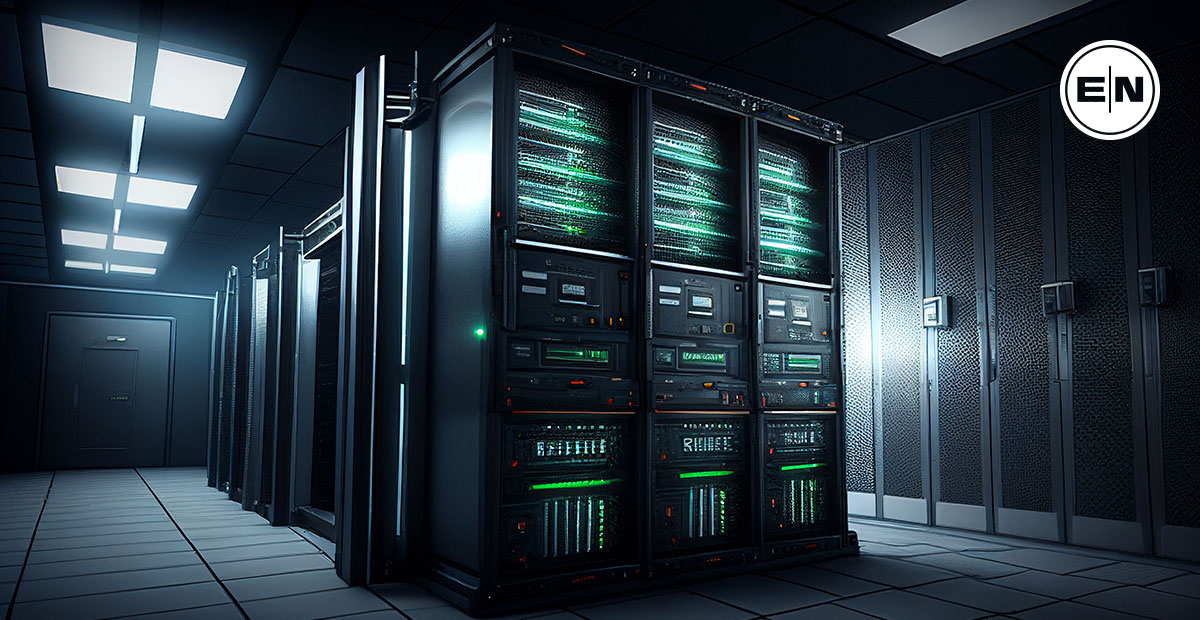Key Considerations in Designing and Implementing a SAN Solution

Designing and implementing a SAN (Storage Area Network) solution for a specific client or project can be complex. Considering various factors, it’s important to approach the process strategically and systematically. So, how exactly do you go about designing and implementing a SAN solution tailored to meet a client’s or project’s unique needs?
In today’s data-driven world, efficient data storage and management is crucial for businesses. SAN solutions provide a centralized storage infrastructure that enhances data accessibility, scalability, and reliability. However, designing and implementing a SAN solution requires careful planning and consideration of the client’s specific requirements and project goals.
When designing and implementing a SAN solution for a specific client or project, there are several key steps and considerations to remember. A well-executed SAN solution can greatly benefit the client’s data management needs, from assessing storage requirements to selecting the right hardware and software components. In this article, we will explore the essential steps and best practices involved in designing and implementing a SAN solution tailored to meet the unique needs of a client or project.
What is a Storage Area Network (SAN)?
A storage area network (SAN) is a dedicated high-speed network used to interconnect multiple servers and pools of storage devices. This provides the increased availability, scalability, and accessibility businesses need for enterprise computing. Instead of tying the important data directly to physical servers like traditional direct-attached disk deployments did, a SAN separates this data from its server hosts which provides greater flexibility and control.
The concept of a SAN has been evolving since it first came into existence over 20 years ago and today’s SANs scale much better than their predecessors due to improved hardware and software capabilities. They can be connected over Fibre Channel or Ethernet connection types, making them easy to integrate with existing data center infrastructure. Each Storage Area Network also enables quick provisioning of additional buildings or remote sites as needed. As such, they are essential for any business needing accelerated availability of important data across multiple sites or large organizational structures.
Key Considerations in Designing and Implementing a SAN Solution
When designing and implementing a Storage Area Network (SAN) solution for a specific client or project, there are several key considerations to take into account.
Evaluate the Organizational Needs and Requirements
Evaluating the requirements and necessities is the first crucial step in designing a Storage Area Network (SAN) solution. It involves thoroughly understanding the client or project requirements and identifying the data storage and management challenges that must be addressed.
First, it is essential to clarify the current and future data storage requirements. This involves identifying the amount of data that needs to be stored, the expected growth rate, and any specific compliance or regulatory requirements. It is also crucial to understand the required performance levels, whether it’s low latency for real-time applications or high throughput for large data transfers.
Next, evaluating the availability, backup, recovery, and security requirements is important. Assessing the criticality and importance of the data will help determine the necessary redundancy levels, backup strategies, and disaster recovery plans. Moreover, identifying specific security requirements, such as encryption or access control, will help design a solution ensuring data integrity and protection.
Another important aspect is identifying the existing and potential servers and applications that rely on the SAN. This helps determine the required connectivity options, host interfaces, and protocol support. Additionally, understanding the current network infrastructure and available bandwidth will ensure that the SAN solution is designed to integrate with the existing infrastructure seamlessly.
Based on this comprehensive assessment, it becomes possible to define the goals and objectives of the SAN solution. This includes setting performance targets, determining the required capacity and scalability, and establishing the budget and timeline for the project.
By carefully assessing the needs and requirements of the client or project, a SAN solution can be designed to address the specific challenges and provide an optimized and efficient storage and management solution.
Select the Appropriate SAN Architecture and its Components
Choosing the right SAN architecture and components for a client or project requires carefully evaluating their needs and requirements. There are different types of SAN architectures, each with its advantages and disadvantages. These include fiber channel (FC), internet small computer system interface (iSCSI), network-attached storage (NAS), and hybrid architectures.
Fibre Channel (FC) offers high performance and low latency, making it suitable for large enterprises with demanding workloads. iSCSI, on the other hand, uses existing Ethernet infrastructure, providing a more cost-effective solution for smaller organizations. A NAS architecture is designed for file-level storage, making it ideal for content sharing and collaborative work environments. A hybrid architecture combines different technologies to meet specific storage and performance needs.
When selecting SAN components, it is important to consider compatibility, reliability, and functionality. Storage devices, switches, routers, controllers, cables, connectors, and software all play a crucial role in the performance and reliability of the SAN. Evaluating vendor support and warranty is essential to ensure ongoing maintenance and support.
Ultimately, the choice of SAN architecture and components should be based on balancing performance, cost, compatibility, and scalability with the client’s or project’s specific needs and requirements. By carefully evaluating these factors, the chosen SAN architecture and components will effectively meet the storage demands and achieve the desired outcomes.
Design and Structure The Storage Area Network Topology and Layout
Designing the SAN (Storage Area Network) topology and layout is a crucial step in optimizing the SAN solution’s performance, availability, and security. To accomplish this, several factors need to be considered.
First and foremost, it is essential to determine how the storage devices, switches, routers, controllers, and servers will be connected and configured in the network. This requires careful consideration of the requirements and capabilities of each component, ensuring compatibility and effective integration.
Redundancy is vital to consider, as it ensures high availability and mitigates the risk of data loss. This can be achieved by incorporating redundant components, such as dual switches, power supplies, and controllers, and implementing failover mechanisms to switch between active and standby devices seamlessly.
Load balancing should also be considered to distribute the storage and workload evenly across the network, preventing bottlenecks and optimizing performance. This can be achieved through channel bonding or specialized load-balancing switches.
Zoning and masking are important for enhancing security and isolating different parts of the SAN. By creating logical groups, each with its access controls, unauthorized access can be prevented, and sensitive data can be secured.
Encryption is another critical consideration to protect data during transmission and storage. Implementing encryption mechanisms ensures that even if the data is intercepted, it remains secure and accessible only to authorized individuals.
Lastly, careful planning of the physical placement and installation of SAN components is necessary. This involves considering factors such as power requirements, cooling, and cabling to ensure optimal performance and longevity of the equipment.
Designing the SAN topology and layout requires careful consideration of factors like redundancy, failover, load balancing, zoning, masking, encryption, physical placement, and installation. By incorporating these considerations, organizations can optimize their SAN solutions’ performance, availability, and security.
Execute the Implementation and Conduct Thorough Testing of the SAN Solution
To implement and evaluate the SAN solution, it is crucial to adhere to the best practices and guidelines for installing, configuring, and integrating the SAN components. This ensures a smooth and successful deployment of the solution.
Firstly, it is important to follow the design and layout of the SAN solution carefully. This includes appropriately connecting the storage devices, switches, and servers as specified in the design. Double-checking these connections will minimize potential errors during implementation.
Next, security aspects need to be considered. Implementing proper access controls, encryption, and monitoring mechanisms will help safeguard the sensitive data stored in the SAN. Regular security audits should be conducted to identify and mitigate any vulnerabilities immediately.
Performance testing is another crucial step in implementing a SAN solution. Benchmarking the SAN’s performance under various workloads can identify its limitations, and necessary optimizations can be made to ensure efficient and reliable usage.
Availability testing is equally important to ensure the SAN solution can handle unexpected failures or disasters. Implementing redundant components and conducting failover tests will validate the solution’s ability to provide uninterrupted access to data.
Lastly, troubleshooting skills are essential to address any problems or errors arising during the implementation and testing process. Close collaboration with vendors, robust knowledge of SAN technologies, and the utilization of appropriate diagnostic tools will aid in quickly identifying and resolving issues.
By strictly adhering to these instructions, one can effectively implement and test a SAN solution, verifying its functionality, performance, availability, and security.
Create Documentation and Oversee the Monitoring of the SAN Solution
After implementing and testing the SAN solution, it is crucial to document and monitor it effectively. This can be done by creating and maintaining a comprehensive documentation of the SAN solution. The documentation should include details about the Storage Area Network design, layout, configuration, components, vendors, and contacts.
The documentation is essential as it provides a reference for future troubleshooting, upgrades, or expansions. It ensures that the technical aspects of the SAN solution are well-documented and easily accessible to the relevant personnel.
In addition to documentation, regular monitoring of the SAN solution is crucial to ensure its optimal performance. This involves utilizing tools and software that can provide metrics, alerts, reports, and logs.
IT professionals can proactively identify any issues or by monitoring the SAN solution. They can track performance metrics such as latency, throughput, and availability. Monitoring alerts and logs can help identify failures or performance degradation before impacting end-users.
Furthermore, analyzing the data and feedback from monitoring tools and software is essential. This allows IT professionals to gain insights into the performance of the SAN solution and make necessary adjustments or improvements. They can identify trends, optimize resource allocation, and plan for future growth by analyzing the data.
Documenting and monitoring the SAN solution are vital steps after its implementation and testing. A comprehensive documentation ensures that all technical aspects of the solution are well-documented, facilitating future troubleshooting and upgrades. Regular monitoring, analysis, and adjustment ensure optimal performance and provide insights for continuous improvement.
Provide Training and Ongoing Support
When implementing a Storage Area Network (SAN) solution, training and supporting the SAN users and administrators is essential to ensure smooth operation and efficient management.
To begin, comprehensive training sessions should be conducted to educate the users and administrators on accessing, storing, and managing data using the SAN solution. This training should cover topics such as how to access the SAN, navigate the storage hierarchy, and efficiently store and retrieve data. Additionally, guidelines on organizing data within the SAN, best practices for data management, and data protection protocols should be provided.
Support and assistance should also be provided to troubleshoot any issues arising during SAN usage. This includes training users and administrators on identifying and resolving common problems, such as connectivity issues or data corruption. Furthermore, guidance should be given on maintaining and upgrading the SAN solution, including routine maintenance tasks and applying firmware or software updates.
To ensure a cohesive and unified approach to SAN usage and administration, it is crucial to establish and communicate clear policies and procedures. These should outline the proper protocols for accessing and using the SAN and the roles and responsibilities of the SAN users and administrators. This includes defining who has permission to execute certain actions, who is responsible for monitoring and maintaining the SAN, and who should be contacted in case of any issues or questions.
By providing thorough training, ongoing support, and establishing clear policies and procedures, SAN users and administrators can fully utilize and effectively manage the SAN solution.
Final Thoughts
Designing and implementing a Storage Area Network (SAN) solution requires extensive research, planning, and preparation. However, when done correctly, it can provide an effective way of storing data efficiently and securely. Documenting the SAN solution thoroughly is important to ensure that all technical aspects are well-documented for future troubleshooting or upgrades. Additionally, regular monitoring, analysis, and adjustment are necessary to ensure optimal performance. Finally, training and supporting the SAN users and administrators is essential to ensure that they can effectively use the solution.
Why Choose US
At ExterNetworks, we understand how important it is to provide reliable and secure SAN solutions. Our expert team of engineers can design and implement the perfect SAN solution tailored to your exact needs. We have extensive experience in designing, implementing, and managing SANs for many clients with diverse requirements.
We pride ourselves on offering comprehensive technical support throughout the entire process. Our knowledgeable and experienced team will work closely with you to ensure your SAN solution is running smoothly and that any issues are promptly addressed. With our cutting-edge technology, exceptional customer service, and reliable solutions, you can trust ExterNetworks to provide a best-in-class SAN solution.




